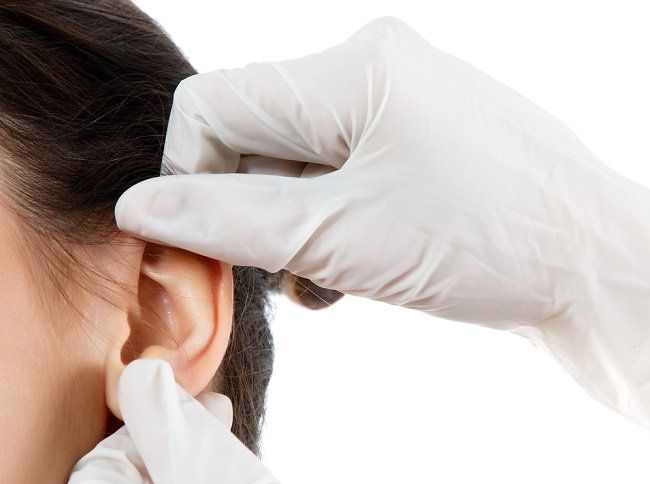Subcutaneous emphysema is a condition when air or gas is trapped in the skin tissue. This condition is most commonly found in the tissues of the neck or chest wall, although it is possible to occur in other parts of the body.
Some people who experience subcutaneous emphysema may not feel symptoms, especially if the emphysema condition they experience is not too severe. However, subcutaneous emphysema can also be caused by a dangerous disease or condition.

For these conditions, subcutaneous emphysema will usually cause the following complaints or symptoms:
- Painful
- Difficulty breathing
- Hard to breathe
- Wheezing
- Chronic cough with phlegm
- Loss of appetite
- Nauseous
- Nails changing color
Sometimes, subcutaneous emphysema can also appear as bruising, swelling, or sores on the affected body part.
Some Causes of Subcutis Emphysema
There are several things that can cause subcutaneous emphysema, including:
1. Lung and respiratory disorders
Subcutaneous emphysema can be caused by lung disorders such as a pneumothorax.
Pneumothorax is a condition when air collects in the pleural cavity, the space between the lungs and the chest wall, causing the lungs to collapse and cannot expand. This condition makes it difficult for the sufferer to breathe.
In addition, subcutaneous emphysema can also occur due to diseases of the respiratory tract, such as chronic bronchitis, COPD, and whooping cough.
2. Injury
Injury or blunt force trauma to the chest, such as gunshot wounds and stab wounds, can cause subcutaneous emphysema. The injury can result in tearing of the pleura, allowing air from the lungs to spread to the muscle and fat layer and surrounding skin tissue.
In addition, injuries resulting in facial fractures and barotrauma can also cause subcutaneous emphysema. Barotrauma or injury caused by sudden changes in air pressure can occur in the lungs.
This condition is more risky experienced by people who often dive or climb mountains. Sometimes, barotrauma can also occur in people who frequently travel by airplane.
3. Complications of medical procedures
In addition to certain injuries or diseases, subcutaneous emphysema can also occur due to complications from certain medical procedures. Some medical procedures or procedures that have a risk of causing subcutaneous emphysema are endoscopy, bronchoscopy, and intubation.
4. Drug side effects
Subcutaneous emphysema is also often experienced by users of illegal drugs, especially cocaine.
The drug is usually used by inhaling deeply through the nose, then holding your breath to maximize the amount of cocaine inhaled. This condition can cause damage to the lungs and cause subcutaneous emphysema.
How to treat subcutis emphysema
If you experience symptoms of subcutaneous emphysema, especially if you have experienced an injury to the chest, immediately consult a doctor for an examination.
To detect the condition of subcutaneous emphysema, the doctor will perform a physical examination and supporting tests in the form of X-rays. If necessary, the doctor will also perform pulmonary function tests.
Once your doctor has diagnosed your condition and has identified the cause of subcutaneous emphysema, treatment for this condition can be carried out based on the underlying cause.
To treat subcutaneous emphysema, doctors will usually perform surgery to install a tube or drainage to remove air from the soft tissues.
With proper treatment, subcutaneous emphysema usually resolves in about 10–14 days. The sooner treatment is carried out, the higher the chance of recovering from this condition. Therefore, you need to immediately see a doctor if you experience symptoms of subcutaneous emphysema.









